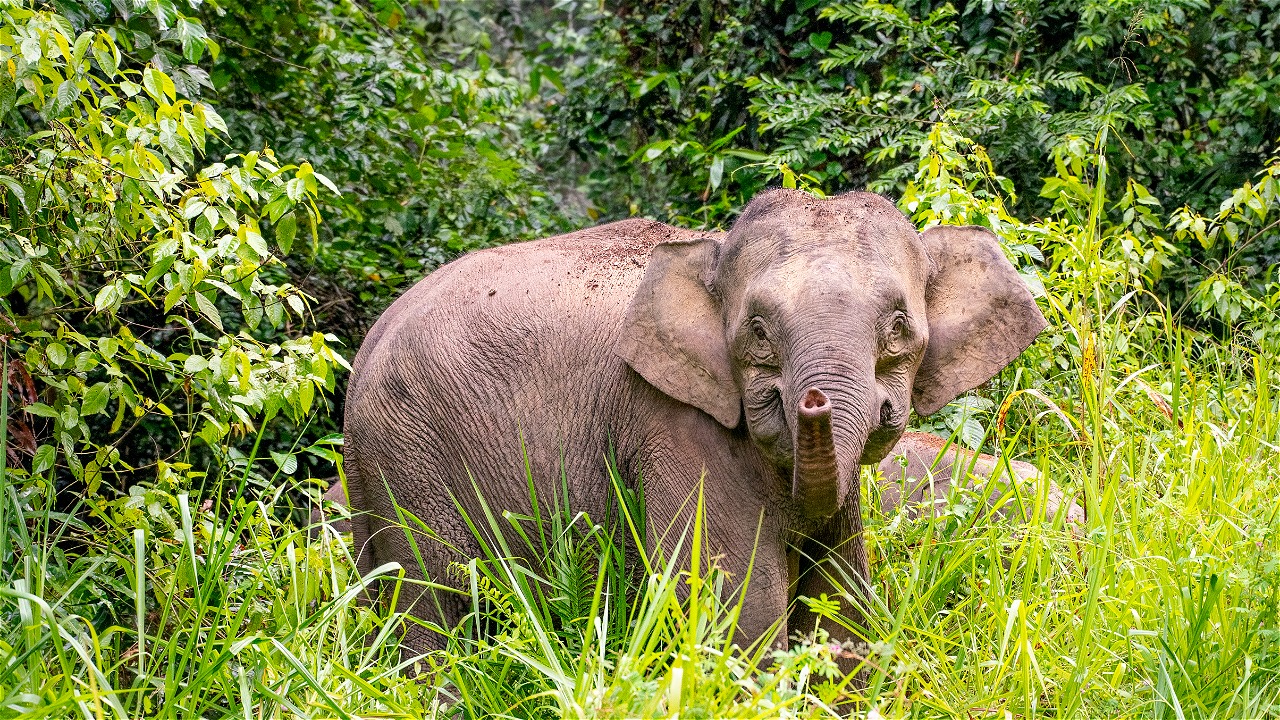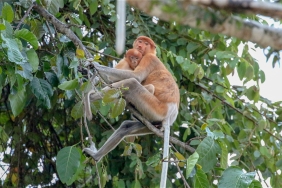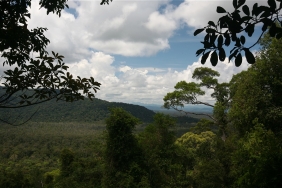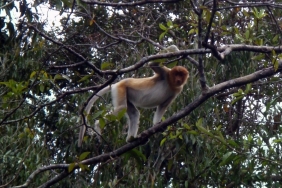HUMAN-ELEPHANT CONFLICT IN DAS PEUSANGAN
By: Azhar
The Peusangan watershed covers an area of 238,550 hectares, which is three times the size of Singapore. The Peusangan watershed is home to hundreds of thousands of people and home to 45 to 50 individual elephants and a host of other wildlife ranging from Sumatran tigers, bears honey deer and others. Unfortunately, most of this area has been dominated by linear development such as road opening, settlements, transmigration and the presence of the oil palm plantation industry and community gardens.
Elephant groups in the Peusangan watershed are divided into three groups. The first group is the Eka elephant group with 17 individual elephants. Second, the Magna group with 19 individual elephants. The third group is the Bongkok group which contains 8 individual elephants, and finally 1 solitary elephant that frequents the Sayeung area, Bener Meriah Regency.
Sumatran elephants are one of the most charismatic mammals in Aceh and other parts of Sumatra. So far, elephants and humans have compromised to share space in the Peusangan watershed. But lately there have been frequent conflicts between humans and Sumatran elephants. This is the dark side of the beautiful world of wild elephants.
The average number of elephant conflict events that occur in this area ranges from 10 to 20 times per month. Conflicts occur randomly and rotate within the Peusangan watershed. If an elephant enters a residential area, it will be evicted from the village to return to the habitat area. The eviction that occurs will usually have an impact on other villages, because elephants will usually move from one village to another.
Some villages that are very vulnerable to elephant conflict in the Peusangan region include Karang Ampar, Central Aceh District, Pintu Rime, Bener Meriah District and Panton Lah, Bireuen District. Communities around these areas suffer the most from direct contact with elephants. The human-elephant conflicts that occur make the people here uneasy in carrying out their daily activities.
The elephants in this area roam in limited production forests and cultivation areas or APL (Areal Penggunaan Lain) areas. This makes elephant groups very vulnerable to conflict with humans. Elephant and human conflicts that occur in the Peusangan watershed area prove that elephants need a large space to roam. One elephant needs at least 800 hectares of space, while the elephants in this area are outside the conservation area.
Another thing is that elephants cannot live in small fenced-in areas often called protected area networks or conservation areas. Sumatran elephants are constantly on the move throughout their lives to meet their enormous food and water intake needs. An elephant needs 300 kg of food and 200 liters of water every day. If the food supply in the forest adjacent to the village is depleted, the elephant will move in search of food to settlements or community agricultural areas. This is the natural instinct of elephants to fulfill their food needs. This is what triggers conflicts between elephants and humans.
To reduce human-elephant conflicts that occur in this area, various conflict mitigation methods are implemented by the Government and conservation organizations. Among these methods is the creation of anti-elephant trenches, which is also the most widely applied method in Sumatra today. Unfortunately, the construction of anti-elephant trenches is quite costly, making funding a challenge for the implementation of this method.
Second, the creation of elephant repellent groups at the village level. Traditional mitigation using drum sounds, fires and the use of smoke, firecrackers, cannons and chasing elephants while shouting "surut kawan kul- surut kawan kul" are the methods used by these elephant repellent groups. Community cohesiveness is key to the success of this method.
Third, the installation of GPS collars to track elephant movements to detect the entry of elephants into residential areas. If an elephant is detected entering the village, a text message-based early warning containing information on the elephant's presence is disseminated to the community, so that people can evacuate themselves and prepare to avoid direct contact with the elephant.
The Peusangan watershed area has also established the Peusangan Conservation Response Unit (CRU). This unit was established by the Aceh Government and is responsible for the eviction of wild elephants in villages and in the Peusangan area. In addition to the CRU formed by the Aceh Government, there is also a similar group formed by WWF-Indonesia under the name Group of Eight. All of these groups also collaborate in carrying out their duties and have the same goal, which is to help communities in areas prone to elephant conflict and minimize conflicts that occur.
In practice, human-elephant conflict mitigation also involves oil palm plantation companies located in the Peusangan watershed area. Palm oil companies are required to contribute to reducing elephant conflicts. The use of a corporate social responsibility (CSR) fund scheme is applied to help communities around areas vulnerable to elephant conflict. This effort can be facilitated by the District Government or the District People's Legislative Council (DPRK) in the three districts.
In addition, the creation of organic fences, especially beehive and chili fences, which act as a gentle barrier to elephants can also be done. This technique has experienced some success and can be applied in the Peusangan watershed area. The use of fencing using beekeeping or chili plants can also have a positive impact on the livelihoods of local communities. However, this method is not a permanent solution.
Elephants that are constantly moving across large areas need a permanent path called a ""corridor"". Corridors make it easier for elephants to move between isolated habitats and aim to aid regular elephant movement. Generally, corridors are understood to be narrow strips of forest that connect two larger habitats to ensure peaceful mobilization of elephants from one habitat to another. Corridors can also maintain genetic linkages between two elephant populations, by allowing individuals to occasionally cross into the other habitat. This will result in healthy elephant populations and avoid inbreeding.
The route of the elephant travel corridor can be taken from Ketol sub-district (Central Aceh), Negeri Antara (Bener Meriah District), Sayeung Pintu Rime (Bener Meriah District) to Peudada sub-district (Bireuen District). Contributions from local government, provincial government and other stakeholders in the region are urgently needed to save the fate of Sumatran elephants. In addition, there must be a scientific study of the corridor area that describes the elephant's habitat, including the availability of food plants, the availability of burrows, the availability of saltlick areas and the availability of water for wild elephants.
The Aceh Provincial Government and three districts namely Central Aceh, Bener Meriah and Bireuen are also synergizing to create an elephant-based conservation area or Botanical Forest Park (Tahura) based on elephant management. A land area of 37,000 to 45,000 hectares is needed to accommodate elephants in this area. In the process of realizing the establishment of this Tahura, a clear legal umbrella and area arrangement is also needed. In addition, efforts to multiply water sources and enrich feed plants to create elephant-based ecotourism designs are also carried out to contribute to the preservation of Sumatran elephant conservation. If it can run well, then in the future this place can become the center of wild elephant studies in Aceh and become a solution to overcoming human-elephant conflicts that occur in the Peusangan watershed area.





